1
Renew, release, let go. Yesterday’s gone. There’s nothing you can do to bring it back. You can’t “should’ve” done something. You can only DO something. Renew yourself. Release that attachment. Today is a new day!Steve Maraboli
2
Maybe your country is only a place you make up in your own mind. Something you dream about and sing about. Maybe it's not a place on the map at all, but just a story full of people you meet and places you visit, full of books and films you've been to. I'm not afraid of being homesick and having no language to live in. I don't have to be like anyone else. I'm walking on the wall and nobody can stop me.Hugo Hamilton
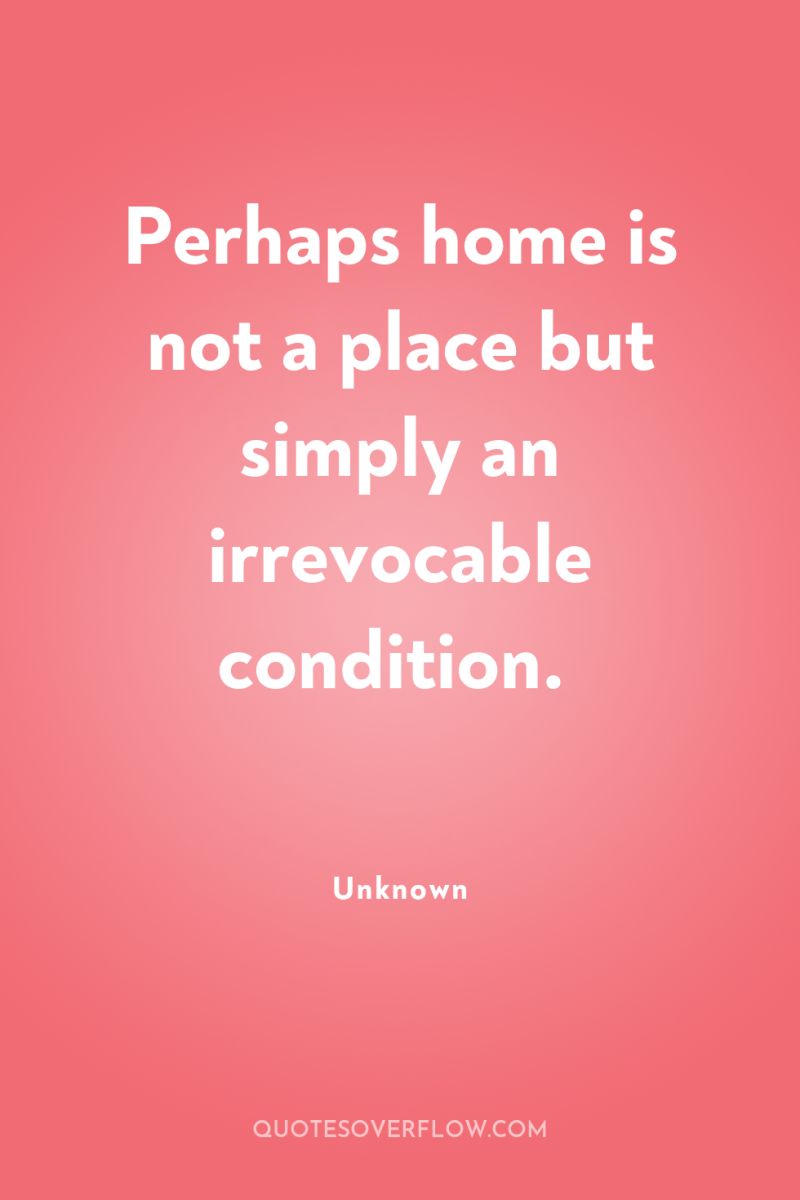
3
Perhaps home is not a place but simply an irrevocable condition.Unknown
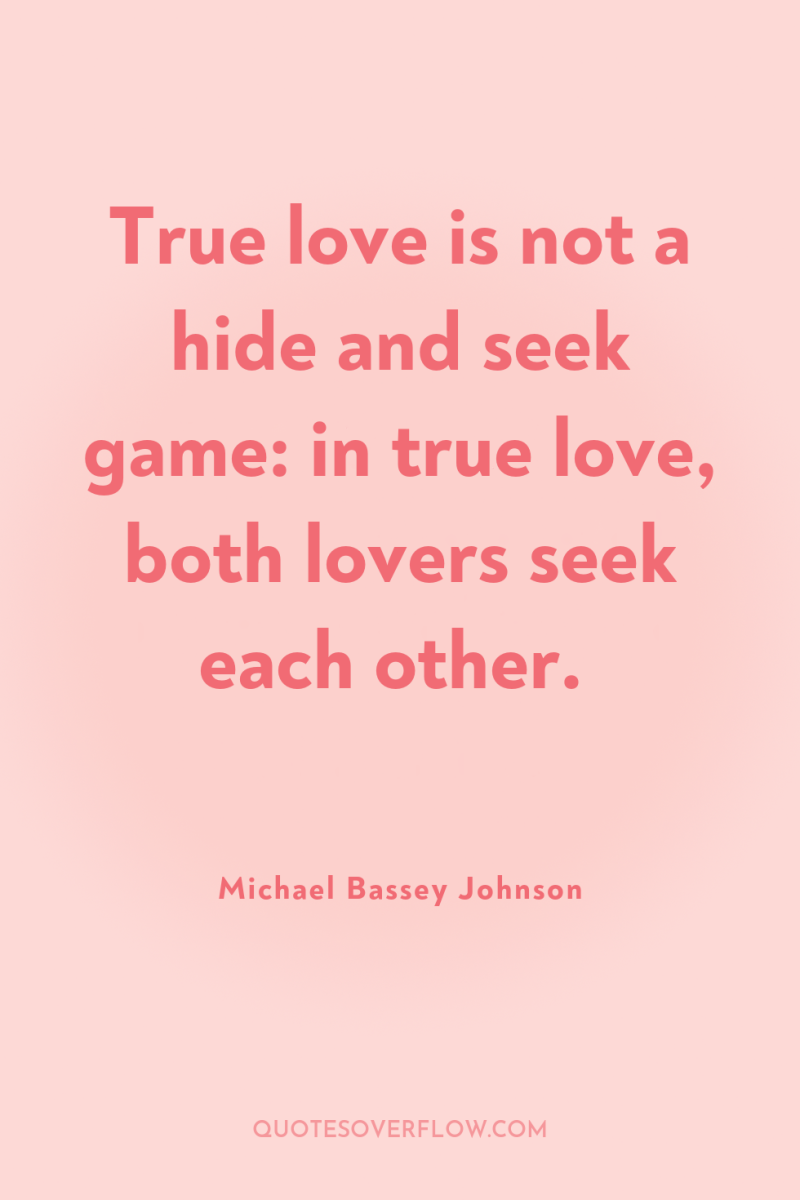
4
True love is not a hide and seek game: in true love, both lovers seek each other.Michael Bassey Johnson
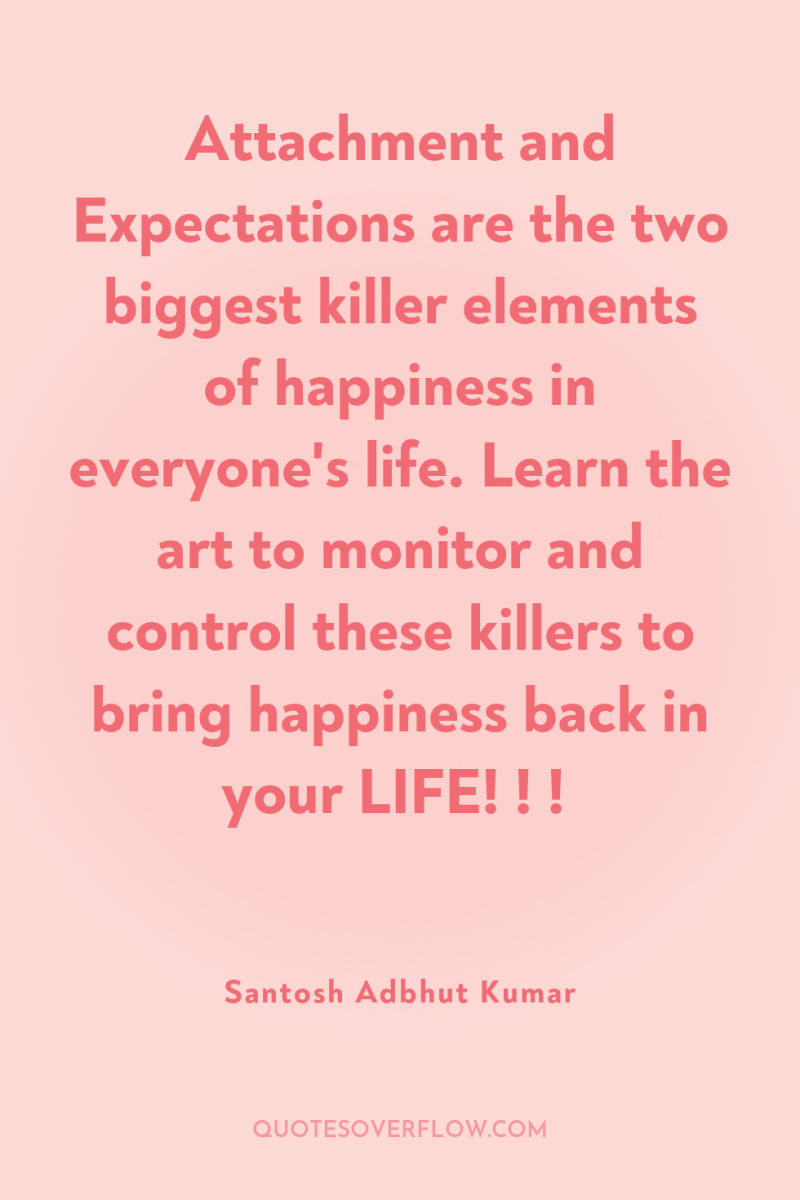
5
Attachment and Expectations are the two biggest killer elements of happiness in everyone's life. Learn the art to monitor and control these killers to bring happiness back in your LIFE! ! !Santosh Adbhut Kumar
6
We commonly confuse love with the strong emotions most often associated with it, such as joy, attachment, lust, infatuation, pleasure, pain, fear, and hope, to name a few. But, love is not a feeling; love itself is an action. There are countless emotions and beliefs that can cause us to love. Love is the willing giving of self to another living being. Love is giving the life, time, energy, and resources that we would normally give or use for our self to someone else. Love is an action that enhances the well-being of another living being.C W Newman
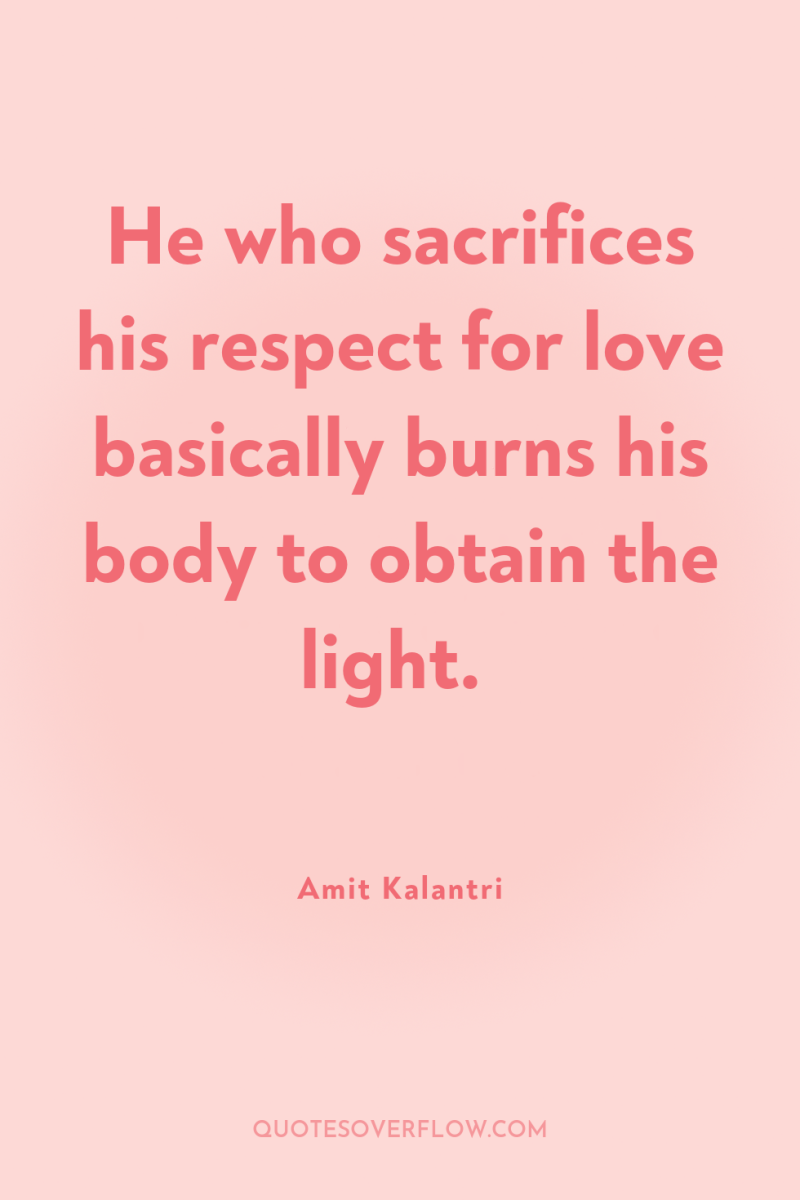
7
He who sacrifices his respect for love basically burns his body to obtain the light.Amit Kalantri

8
Attachment-abhorrence is the foundation for the worldly life and the foundation for ‘Knowledge’ is a state free of all attachments (vitragta).Dada Bhagwan
9
Yes, a deep lesson from the postage stamp. It attaches itself to a moveable material, the envelope and gets going. A good relationship keeps you going forward; a bad one keeps you static. Attach yourself to someone who is also going forward and you will also get there.Israelmore Ayivor
10
For to have a deep attachment for a person (or a place or thing) is to have taken them as the terminating object of our instinctual responses." Separation anxiety. International Journal of Psycho-Analysts, XLI, 1-25 (1959(John Bowlby
11
Love is not the answer, peace is. Throughout my whole life I have experienced and seen others use love as a reason to treat people with unkindness by being controlling, jealous, shouting in anger, and projecting guilt and shame. If you love someone but there is not peace in your heart when you think of that person then your work is not done. Do not stop at love, continue all the way towards the freedom of inner peace. Love starts when peace begins. Without peace love is simply a mask for our insecurity, judgment, and egoic attachments.Alaric Hutchinson
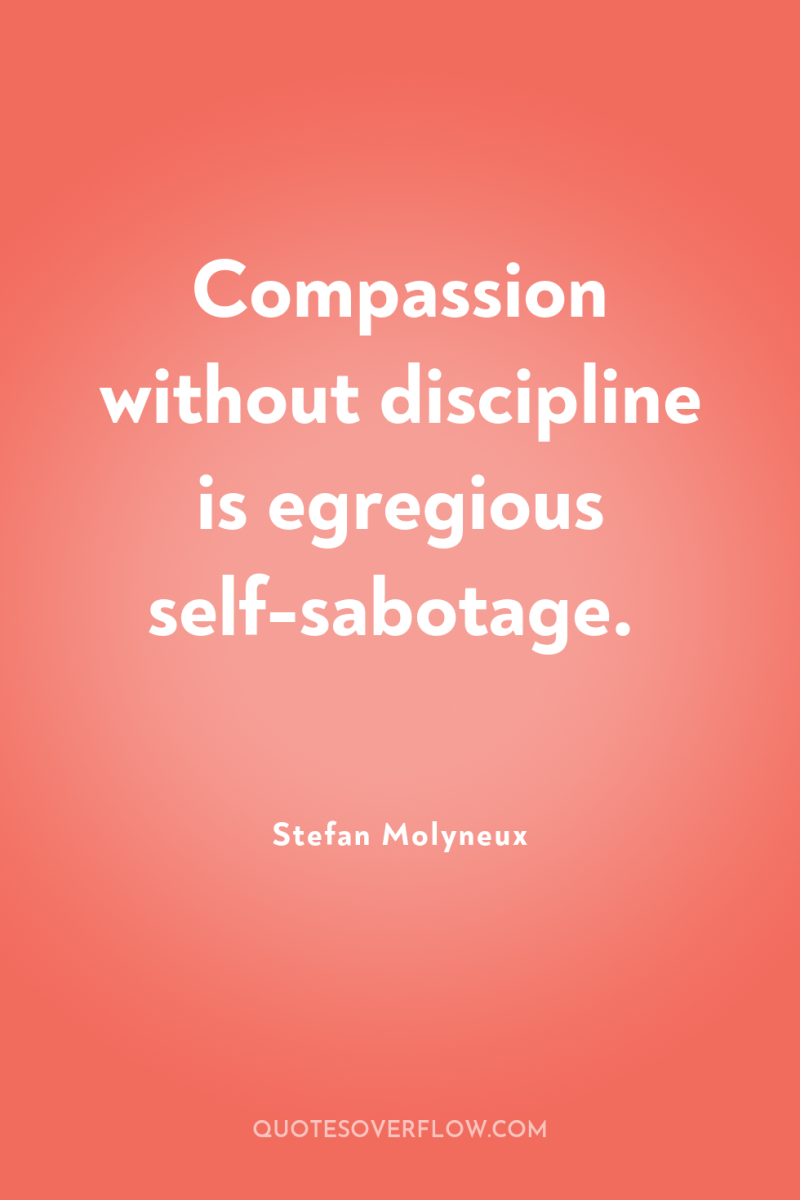
12
Compassion without discipline is egregious self-sabotage.Stefan Molyneux
13
She tried to remember all the times she had spoken to him. She replayed every moment she could remember at the beach last week. Not once had she led him to believe that she liked him improperly. And yet, last night, he had appeared as if she had invited him. She had given herself so willingly, so lasciviously, that he must have thought she had desired him all along. Perhaps she had, or perhaps she had not realised how pleasurable intimacy could be.Mahita Vas
14
You yearn to stay in this in-between place, where the beauty of the times you have freshly bade farewell to is still alive and vivid in your mind — almost real — and the reality of your new circumstances has yet to fully sink in. You listen to the familiar melodies that had accompanied you on your journey, and allow the music to evoke landscapes and scenes in your mind. The songs caress your sub-consciousness and fill your being with an airy joy. You are both here and elsewhere. Or perhaps you are everywhere and nowhere.Agnes Chew
15
Moments later, I was climbing nervously into the back of the car. The driver wore the archetypal expression of an antagonist. No words were exchanged beyond the brief lines uttered to this nameless stranger, whose inclinations remained unclear. The car sped along empty roads and traversed dingy alleyways. Music blared from its speakers. I did not remember exhaling throughout the entire journey.Agnes Chew
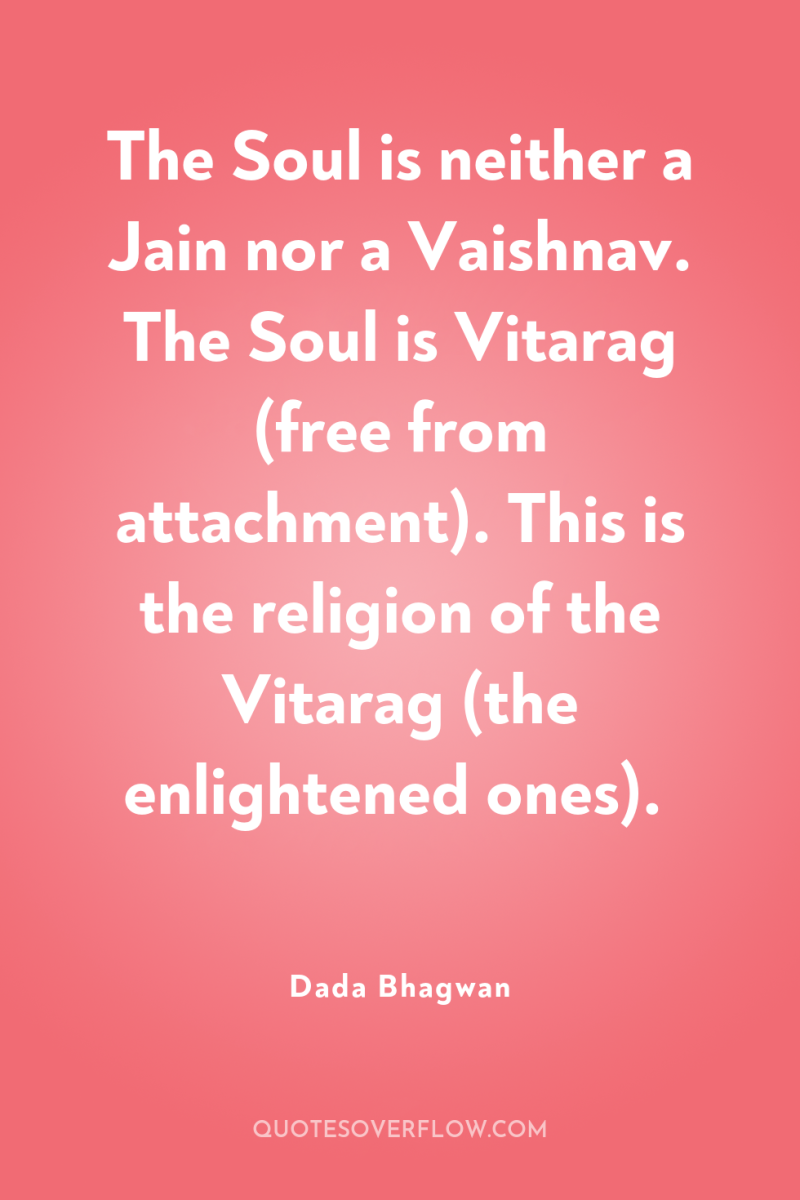
16
The Soul is neither a Jain nor a Vaishnav. The Soul is Vitarag (free from attachment). This is the religion of the Vitarag (the enlightened ones).Dada Bhagwan

17
Awareness (of the Self) prevails in matters where one becomes attachment-free (vitrag), and where one has attachment-abhorrence, there his awareness will not prevail.Dada Bhagwan
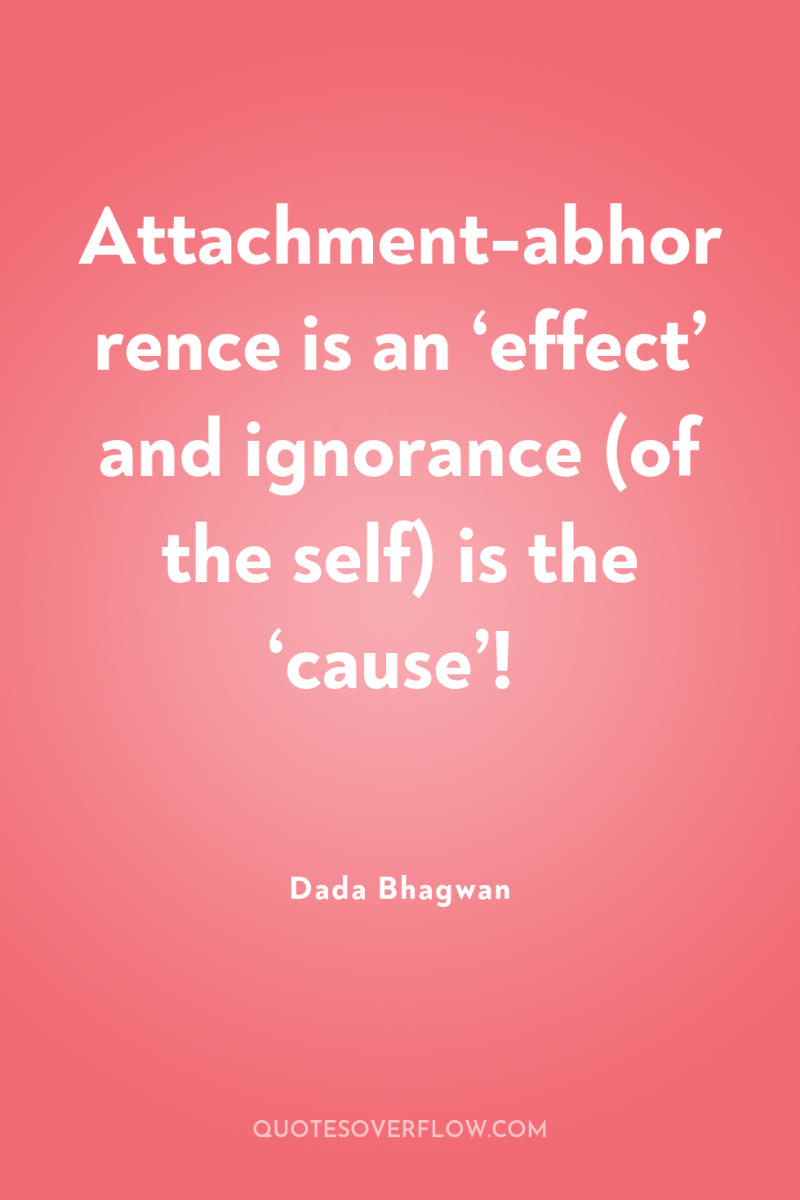
18
Attachment-abhorrence is an ‘effect’ and ignorance (of the self) is the ‘cause’!Dada Bhagwan
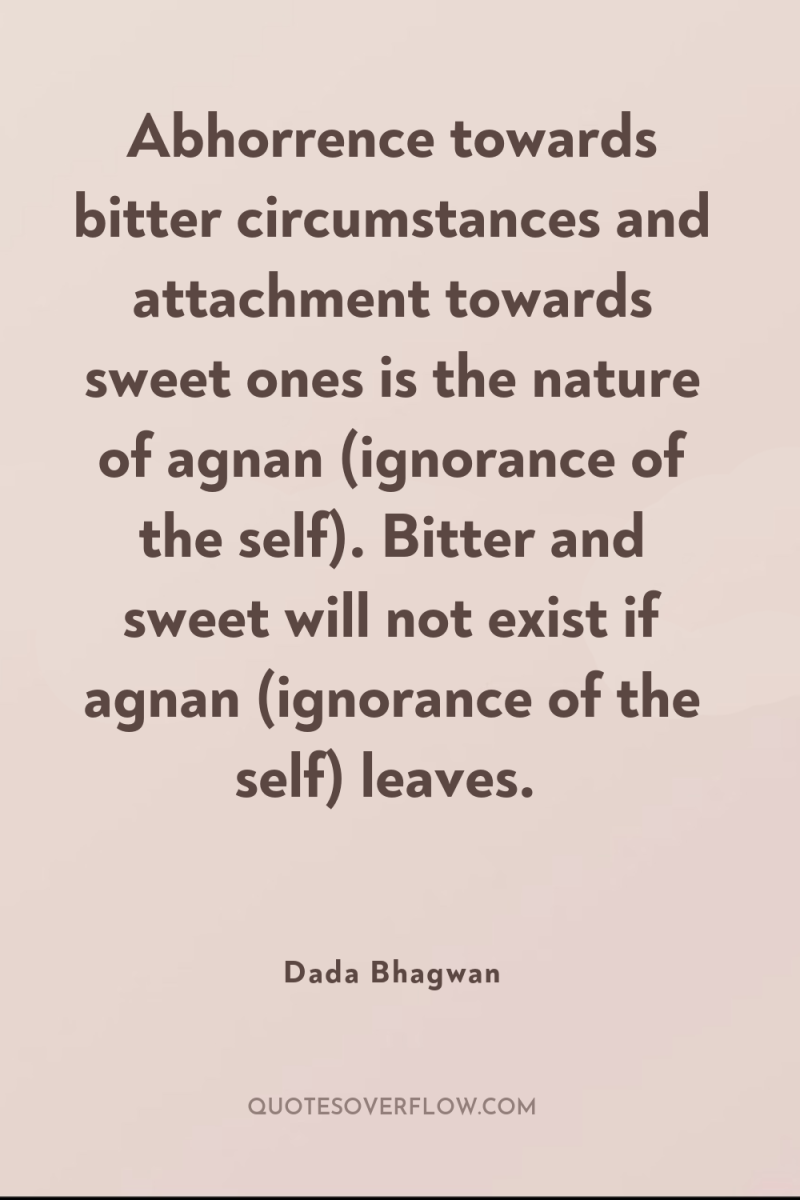
19
Abhorrence towards bitter circumstances and attachment towards sweet ones is the nature of agnan (ignorance of the self). Bitter and sweet will not exist if agnan (ignorance of the self) leaves.Dada Bhagwan
20
There is no means other than vitrag-science (science that frees us from all attachments) that will give Final-Liberation [Moksha]. Other means [methods, instruments] will cause bondage; they only help to pass the time; [whereas] means to attain the Eternal Thing (experience of Pure Soul) can be attained from the ‘Gnani Purush’ (the enlightened one).Dada Bhagwan
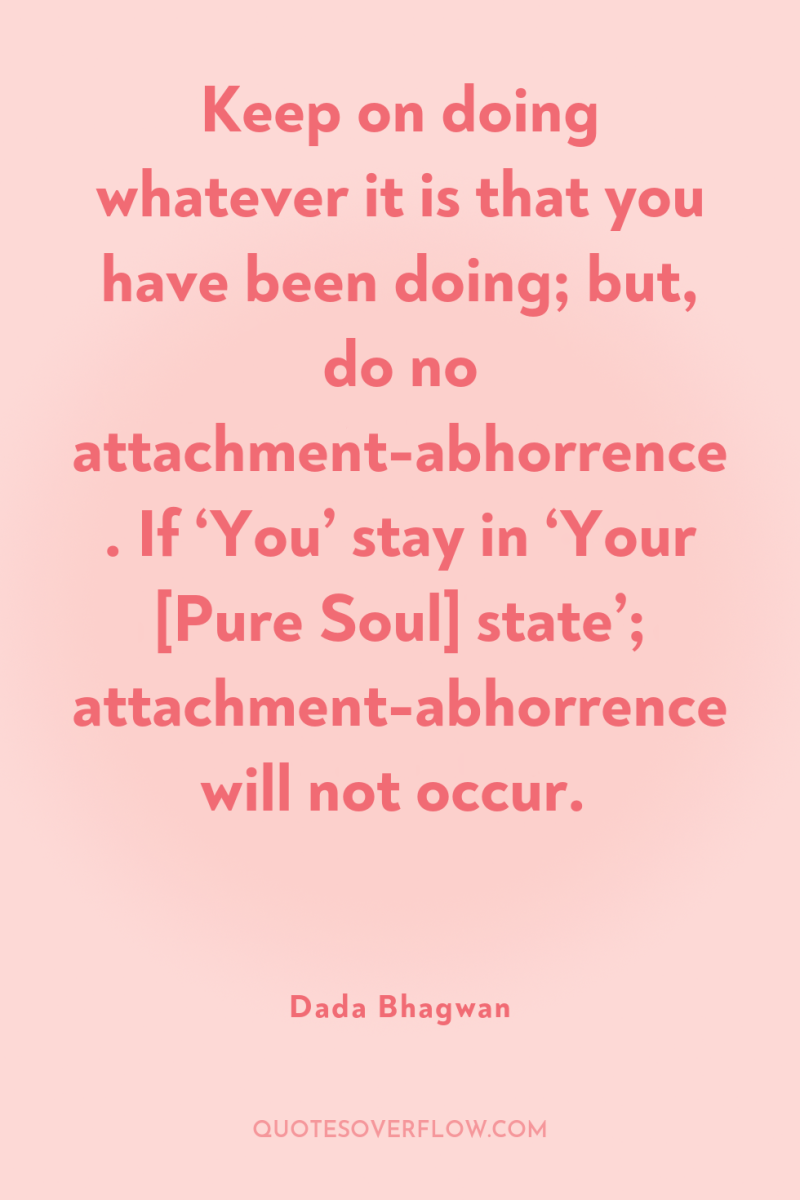
21
Keep on doing whatever it is that you have been doing; but, do no attachment-abhorrence. If ‘You’ stay in ‘Your [Pure Soul] state’; attachment-abhorrence will not occur.Dada Bhagwan
![My-ness (mamta) is indeed parigrah [attachment to material objects]; material...](https://cdn.quotesoverflow.com/file/quotesoverflow/images/my-ness-mamta-is-indeed-parigrah-attachment399416579654-1200.webp)
22
My-ness (mamta) is indeed parigrah [attachment to material objects]; material object is not a parigrah. Gnani doesn’t have My-ness (mamata), He has the eternal element (experience of Pure Soul).Dada Bhagwan
23
Once an opinion is formed, there will be attachment-abhorrence. A person without opinion is also without attachment-abhorrence.Dada Bhagwan
24
Prakruti [the relative self, innate nature] has opinions and may store them but we should stay in an opinion-free state. ‘We’ are separate and the relative self is separate from us. ‘We’ should play our part as a separate entity. We shouldn’t get involved with those problems.Dada Bhagwan
25
God has said for us to know bad, as bad and good, as good. But while knowing the bad, there should not be the slightest abhorrence towards it and while knowing the good, there should not be slightest attachment towards it. Without knowing bad, as bad, the good cannot be known as good.Dada Bhagwan
26
When faced with contrast, take nothing personally and don’t try to defend yourself. Defending one’s self is a vibrational relative of guilt. People will think what they like; do not feed fuel to the fire by reacting. Simply ask questions for clarity and in response say ‘Is that so?’ Take responsibility for the energy you brought to the situation, acknowledge the illusions without attachment, and move forward. Other people’s opinions are none of your business. Remember that each person is on their own unique path, and the mirror of contrast you hold up to them may be exactly what is necessary for their conscious growth at that time.Alaric Hutchinson
27
Un-attachment (as opposed to detachment) is the acceptance that each and every person is responsible for his or her own reality, and that our joy, peace, security, and sense of love is not dependent on any other person or situation. We are each responsible for our own emotional well being.Alaric Hutchinson
28
It is the nature of the circumstances to disperse. If there is attachment with the circumstance, there will be abhorrence when they get dispersed.Dada Bhagwan
29
Abhorrence is the cause for conflicts. God has said, ‘Do no abhorrence. If you don’t like it, ignore it’.Dada Bhagwan
30
Causes for attachment are created at the very time abhorrence occurs. Familiarity (acquaintance) up to a certain point will result in attachment and if it reaches ‘ridge point’ & goes past further, it will result in abhorrence.Dada Bhagwan
31
What is attraction (akarshan) in this world? It is open fire and one should be aware of it. Attraction is the open fire. The root of illusory attachment (moha) is indeed attraction.Dada Bhagwan
32
When you love someone, you end up caring about each and every person they love. When you hate someone, you end up caring about every single person who hates them.Mokokoma Mokhonoana
33
I don't see money as evil or good: how can illusion be evil or good? But I don't see heroin or meth as evil or good, either. Which is more addictive & debilitating, money or meth? Attachment to illusion makes you illusion, makes you not real. Attachment to illusion is called idolatry, called addiction.Daniel Suelo
34
Nostalgia has a way of blocking the reality of the past.Shannon L. Alder
35
Mind control is built on lies and manipulation of attachment needs. Valerie Sinason, (Forward)Alison Miller
36
My goal is not to upset the apple cart, but to make it more accessible.Tom Althouse
37
A child's attachment process begins within the first year of life...Asa Don Brown
38
Attachments that are not fostered may lend to the child's inability to properly attach or have no attachment at all.Asa Don Brown
39
Attachment parenting, Sears writes, "immunizes children against many of the social and emotional diseases which plague our society, " producing children who are "compassionate, " "caring, " "admirable, " "affectionate, " "confident, " and "accomplished" ("faster than a speeding bullet, " "more powerful than a locomotive, " and "able to leap tall buildings in a single bound" seem to have been left off the list! ).Emily Matchar
40
As a child, I was very careful not to erase my mother's writing on the chalkboard because I would miss her.Joyce Rachelle
41
Boundary construction is most evident in three-year-olds. Boundary construction is most evident in three-year-olds. By this time, they should have mastered the following tasks:1. The ability to be emotionally attached to others, yet without giving up a sense of self and one‘s freedom to be apart, 2. The ability to say appropriate no's to others without fear of loss of love, 3. The ability to take appropriate no's from others without withdrawing emotionally. Noting these tasks, a friend said half-joking, "They need to learn this by age three? How about by fourty-three?" Yes, these are tall orders but boundary development is essential in the early years of life. .Henry Cloud
42
Research on organised abuse emphasises the diversity of organised abuse cases, and the ways in which serious forms of child maltreatment cluster in the lives of children subject to organised victimisation (eg Bibby 1996b, Itziti 1997, Kelly and Regan 2000). Most attempts to examine organised abuse have been undertaken by therapists and social workers who have focused primarily on the role of psychological processes in the organised victimisation of children and adults. Dissociation, amnesia and attachment, in particular, have been identified as important factors that compel victims to obey their abusers whilst inhibiting them from disclosing their abuse or seeking help (see Epstein et al. 2011, Sachs and Galton 2008). Therapists and social workers have surmised that these psychological effects are purposively induced by perpetrators of organised abuse through the use of sadistic and ritualistic abuse. In this literature, perpetrators are characterised either as dissociated automatons mindlessly perpetuating the abuse that they, too, were subjected to as children, or else as cruel and manipulative criminals with expert foreknowledge of the psychological consequences of their abuses. The therapist is positioned in this discourse at the very heart of the solution to organised abuse, wielding their expertise in a struggle against the coercive strategies of the perpetrators. Whilst it cannot be denied that abusive groups undertake calculated strategies designed to terrorise children into silence and obedience, the emphasis of this literature on psychological factors in explaining organised abuse has overlooked the social contexts of such abuse and the significance of abuse and violence as social practices.Michael Salter
43
SELFHOOD AND DISSOCIATIONThe patient with DID or dissociative disorder not otherwise specified (DDNOS) has used their capacity to psychologically remove themselves from repetitive and inescapable traumas in order to survive that which could easily lead to suicide or psychosis, and in order to eke some growth in what is an unsafe, frequently contradictory and emotionally barren environment. For a child dependent on a caregiver who also abuses her, the only way to maintain the attachment is to block information about the abuse from the mental mechanisms that control attachment and attachment behaviour.10 Thus, childhood abuse is more likely to be forgotten or otherwise made inaccessible if the abuse is perpetuated by a parent or other trusted caregiver. In the dissociative individual, ‘there is no uniting self which can remember to forget’. Rather than use repression to avoid traumatizing memories, he/she resorts to alterations in the self ‘as a central and coherent organization of experience. . DID involves not just an alteration in content but, crucially, a change in the very structure of consciousness and the self’ (p. 187).29 There may be multiple representations of the self and of others. Middleton, Warwick. "Owning the past, claiming the present: perspectives on the treatment of dissociative patients." Australasian Psychiatry 13.1 (2005): 40-49.Warwick Middleton
44
I have learned that if you must leave a place that you have lived in and loved and where all your yesteryears are buried deep, leave it any way except a slow way, leave it the fastest way you can. Never turn back and never believe that an hour you remember is a better hour because it is dead. Passed years seem safe ones, vanquished ones, while the future lives in a cloud, formidable from a distance.Beryl Markham
45
Stop falling for those who won't raise you up in the future.Michael Bassey Johnson
46
Sticking to one person for a lifetime is not a waste of time or lack of better ones, it means you've found your place of eternity.Michael Bassey Johnson
47
Love should not cause suffocation and death if it is truly love. Don't bundle someone into an uncomfortable cage just because you want to ensure their safety in your life. The bird knows where it belongs, and will never fly to a wrong nest.Michael Bassey Johnson
48
An attachment grew up. What is an attachment? It is the most difficult of all the human interrelationships to explain, because it is the vaguest, the most impalpable. It has all the good points of love, and none of its drawbacks. No jealousy, no quarrels, no greed to possess, no fear of losing possession, no hatred (which is very much a part of love), no surge of passion and no hangover afterward. It never reaches the heights, and it never reaches the depths. As a rule it comes on subtly. As theirs did. As a rule the two involved are not even aware of it at first. As they were not. As a rule it only becomes noticeable when it is interrupted in some way, or broken off by circumstances. As theirs was. In other words, its presence only becomes known in its absence. It is only missed after it stops. While it is still going on, little thought is given to it, because little thought needs to be. It is pleasant to meet, it is pleasant to be together. To put your shopping packages down on a little wire-backed chair at a little table at a sidewalk cafe, and sit down and have a vermouth with someone who has been waiting there for you. And will be waiting there again tomorrow afternoon. Same time, same table, same sidewalk cafe. Or to watch Italian youth going through the gyrations of the latest dance craze in some inexpensive indigenous night-place-while you, who come from the country where the dance originated, only get up to do a sedate fox trot. It is even pleasant to part, because this simply means preparing the way for the next meeting. One long continuous being-together, even in a love affair, might make the thing wilt. In an attachment it would surely kill the thing off altogether. But to meet, to part, then to meet again in a few days, keeps the thing going, encourages it to flower. And yet it requires a certain amount of vanity, as love does; a desire to please, to look one's best, to elicit compliments. It inspires a certain amount of flirtation, for the two are of opposite sex. A wink of understanding over the rim of a raised glass, a low-voiced confidential aside about something and the smile of intimacy that answers it, a small impromptu gift - a necktie on the one part because of an accidental spill on the one he was wearing, or of a small bunch of flowers on the other part because of the color of the dress she has on. So it goes. And suddenly they part, and suddenly there's a void, and suddenly they discover they have had an attachment. Rome passed into the past, and became New York.Now, if they had never come together again, or only after a long time and in different circumstances, then the attachment would have faded and died. But if they suddenly do come together again - while the sharp sting of missing one another is still smarting - then the attachment will revive full force, full strength. But never again as merely an attachment. It has to go on from there, it has to build, to pick up speed. And sometimes it is so glad to be brought back again that it makes the mistake of thinking it is love.(" For The Rest Of Her Life") .Cornell Woolrich
49
Whatever work you do in this world; the work itself has no value. If there is attachment-abhorrence behind that work, then only you are responsible for the next life. You are not responsible if attachment-abhorrence don’t occur.Dada Bhagwan
50
It is called equanimity when one has no attachment with the good (the auspicious) and no abhorrence for the bad (the inauspicious). The one without duality is in equanimity-state. In worldly interactions, people identify tolerance as equanimity!Dada Bhagwan
51
Equanimity means that one does not do abhorrence at the time of abhorrence (generating incidents) and one does not do attachment at the time of attachment (generating incidents).Dada Bhagwan
52
John Donne's 'A Valediction: forbidding mourning' concerns a sea voyage, and uses the image of a circle as an antidote to the abyss of loss and separation. He pictures the invisible but precious bonds which link carer and cared-for, lover and beloved in an attachment relationship as slender threads of gold.Jeremy Holmes
53
We are like children building a sand castle. We embellish it with beautiful shells, bits of driftwood, and pieces of colored glass. The castle is ours, off limits to others. We’re willing to attack if others threaten to hurt it. Yet despite all our attachment, we know that the tide will inevitably come in and sweep the sand castle away. The trick is to enjoy it fully but without clinging, and when the time comes, let it dissolve back into the sea.Unknown
54
You can find hope in despair. Dwell on positive thoughts.Lailah Gifty Akita
55
Let a man leave anger, let him forsake pride, let him overcome all bondage! No sufferings befall the man who is not attached to name and form and who calls nothing his own.[ Verse 221] TR- Friedrich Max MüllerGautama Buddha
56
We are taught to be free from all vices of life. No greed, anger, lust, and attachment with any mundane things.Girdhar Joshi
57
When two persons are too close, they fall apart.Michael Bassey Johnson
58
Lust, anger, attachment, greed, over pride be, Jealousy, selfishness, injustice, cruelty, ego truly;- 153 -Munindra Misra
59
Whether something is wonderful or horrible, the most harmful thought we can think is “Will this last forever?Vironika Tugaleva
60
As children become increasingly less connected to adults, they rely more and more on each other; the whole natural order of things change. In the natural order of all mammalian cultures, animals or humans, the young stay under the wings of adults until they themselves reach adulthood. Immature creatures were never meant to bring one another to maturity. They were never meant to look to one another for primary nurturing, modelling, cue giving or mentoring. They are not equipped to give one another a sense of direction or values. As a result of today`s shift to this peer orientation, we are seeing the increasing immaturity, alienation, violence and precocious sexualization of North American Youth. The disruption of family life, rapid economic and social changes to human culture and relationships, and the erosion of stable communities are at the core of this shift. .Unknown
61
By developing a contaminated, stigmatized identity, the child victim takes the evil of the abuser into herself and thereby preserves her primary attachments to her parents. Because the inner sense of badness preserves a relationship, it is not readily given up even after the abuse has stopped; rather, it becomes a stable part of the child's personality structure.Judith Lewis Herman
62
Affection is a much profound emotion, which is inexplicable but can be fathomed through our pores. It percolates down our skin slowly.Balroop Singh
63
Home's where you go when you run out of homes.Unknown
64
Home is a notion that only nations of the homeless fully appreciate and only the uprooted comprehend.Wallace Stegner
65
[D]etachment means letting go and nonattachment means simply letting be. (95)Stephen Levine
66
We will martyr ourselves, suffering under the weight of a non-reciprocal relationship until some part of us bursts in protest. Suddenly, we lose our mind, and allowing ourselves to heap all manner of nastiness, name calling, patronizing, death threats on the “deserving” jerk who has it coming after all we do for him/her! As the final insult rings across the room and we regain consciousness, we are horrified by what has come out of our mouth. After all, we LOVE these people, and we quickly move into anxious terror that this time we have gone too far . this time we crossed the line and they will leave us. So, we hunker back down and the martyrdom begins again. It’s a terrible cycle. .Mary Crocker Cook
67
Anxiously attached Codependents demonstrate the ability to maximize the attention they get from their partner, regardless of whether it is positive or negative (i.e., "I'd rather be screamed at than ignored"). Manipulation is used to keep the inattentive or inconsistent partner involved by alternating dramatic angry demands with needy dependence. When the partner is preoccupied and not paying attention, the anxious Codependent explodes in angry demands and behaviors that cannot be ignored.Mary Crocker Cook
68
I smiled and looked at her- there she was with such a genuine grin and twinkle in her eyes. I kissed my mother on her forehead and took a long look in to her hazel eyes. I wondered when I would have the next chance to see her as I whispered, 'I love you."Â Mother didn't respond. She didn't look well- she had a tint of green and yellow to her skin and her thinning hair was a dull salt and pepper color, cut extra short and clinging to her scalp. She had no makeup on, which told me she just had no more energy. I began to walk out of her room and turned to look at her. I wanted to run up to her, shake her, and beg her to tell me she loved me and was proud of me. But when I looked at her, she was already sleeping.Jori Nunes
69
Throughout history, the most brutal cultures have always been distinguished by maternal-infant separation.Antonella GambottoBurke
70
At the end, we will arrive where we started.Aditya Ajmera
71
Theirs was a tug-of-war and neither could let go. Both felt the burn and still wouldn't let go. Some might call it a game for neither could admit defeat.Donna Lynn Hope
72
... sexual abuse by the mother is considered to he one of the most traumatic forms of abuse. In some ways it's the ultimate betrayal.Cameron West
73
In this paper I propose the existence of two distinct presentations of DID, a Stable and an Active one. While people with Stable DID struggle with their traumatic past, with triggers that re-evoke that past and with the problems of daily functioning with severe dissociation, people with Active DID are, in addition, also engaged in a life of current, on-going involvement in abusive relationships, and do not respond to treatment in the same way as other DID patients. The paper observes these two proposed DID presentations in the context of other trauma-based disorders, through the lens of their attachment relationship. It proposes that the type, intensity and frequency of relational trauma shape–and can thus predict–the resulting mental disorder. - Through the lens of attachment relationship: Stable DID, Active DID and other trauma-based mental disorders .Adah Sachs
74
Chemistry is not destiny, certainly. But these scientists have demonstrated that the most reliable way to produce an adult who is brave and curious and kind and prudent is to ensure that when he is an infant, his hypothalamic-pituitary-adrenal axis functions well. And how do you do that? It is not magic. First, as much as possible, you protect him from serious trauma and chronic stress; then, even more important, you provide him with a secure, nurturing relationship with at least one parent and ideally two. That's not the whole secret of success, but it is a big, big part of it.Paul Tough
75
My affection for you is not my problem.Ljupka Cvetanova
76
The capacity for dissociation enables the young child to exercise their innate life-sustaining need for attachment in spite of the fact that principal attachment figures are also principal abusers.Warwick Middleton
77
I have a neuroscience background - that's what my doctorate is in - and I was trained to study hormones of attachment, so I definitely feel my parenting is informed by that.Mayim Bialik
78
Attachment parenting is not a passive parenting style.Mayim Bialik
79
Attachment is the great fabricator of illusions reality can be attained only by someone who is detached.Simone Weil